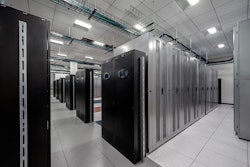For a production and distribution facility that measures 228,000 square feet, it’d be understandable for one to assume that its eco-footprint would correlate to a large impact.
For Avnet and its Global Solutions Center, it’s quite the opposite.
Built in 2009 out of a need for space and consolidation, the giant warehouse for the Phoenix-based technology B2B distributor serves as a model for efficiency and sustainability.
Some distribution centers pride themselves on how much they recycle. Others can boast about their timeliness, or their relatively low power need. Avnet has excelled in all those areas and then some.
“We believe now we are just a couple tenths of a decimal point away from being 100 percent in ensuring we recycle everything,” said John Beimfohr, senior director of integration for Avnet. “We have found better ways to utilize the energy required to keep our building cool and different methods for laying out our production floor. We have replicated these techniques in our other facilities that do the same type of work around the world. The standard has really been used as our new model for integration for Avnet everywhere on the planet.”
The facts don’t lie. In 2013 Avnet was responsible for keeping 126 tons of electronic waste out of landfills — a figure Beimfohr expects to double within the next year as business volume continues to grow.
How much is being so efficient saving Avnet? Its goal for the Global Solutions Center (GSC) is to recycle enough byproducts to neutralize its waste from bathroom, garbage, and food usage, and it is very close to doing that. On the energy front, the original goal was to find enough efficiencies in process and design to ensure the GSC’s kilowatt usage each year grows less than Avnet’s business grows. They’ve accomplished that every year so far.
“We grow far faster than our kilowatt usage,” said Beimfohr, who’s been with the company since 2000.
For its efforts, Avnet was named a 2014 World's Most Ethical Company by Ethisphere Institute this past March.
How did they do it?
Three major innovations help the GSC be so efficient. It utilizes a JDA warehouse management system (WMS), which is deployed in its warehouses worldwide. The WMS drops pick orders to associates, who then select products via radio-frequency scanners.
The WMS led to the implementation of a just-in-time production system, which greatly minimizes the space needed to stage orders. Instead of having to pull a giant set of material to support a day’s worth of production, the model ensures no excess material is used, as well as allotting more precisely the time needed to stage it.
More recently, Avnet has started to repair products on behalf of its suppliers. Traditionally, if something was wrong or defective with a product, Avnet would put it back on the shelf, ship it back to the manufacturer to have it repaired and they’d ship it back to Avnet. That creates a carbon impact in terms of transportation, besides the lost time from delays in the supply chain. Now, Avnet can identify the defect, be shipped only the subcomponent that needs replaced, repair it and put it right back in the inventory.
“It’s a very rapid growth segment for us,” Beimfohr said of the internal repair process.
Built to Sustain
Prior to building the GSC, Avnet had specialized integration centers in the Phoenix area that did certain types of products — one did Sun/Oracle, one did predominantly IBM, one did white boxes. Each of those operations had dramatically different packaging space requirements, and each was running out of room, even as Avnet embraced lean manufacturing and found better ways to use space. Business had simply overgrown capacity.
Avnet’s solution was to make its first facility with maximum efficiency in mind.
“If we want to be competitive moving forward, we need to have capabilities that are not limited to a certain product family,” Beimfohr said. “We need to have facilities that are the best in the industry, that can do everything from taking a simple hard disk and putting a label on it, all the way up to a series of racks that are going to run a data center, and they all need to be done with the same technical professionals and we need to respond and change on the fly.”
To optimize how that process would work, Beimfohr and Avnet spent several years benchmarking how the facility would look, and how the layout and flow would operate before ground broke in April, 2007 in Chandler, Ariz. In the end, the GSC was a culmination of all those ideas built from the ground up.
Challenges, Then and Now
Being so efficient and eco-friendly isn’t easy. Avnet, which reported a revenue of $25.5 billion in 2013, produces more than a ton of cardboard every day. So how does it recycle it all? It was a challenge in the beginning, and still is today. “We were not ready for that volume,” Beimfohr said about when the GSC opened. “It was an overwhelming amount of material.” Recycling it all wouldn’t have been possible without the help of the company’s recycling partners, who were able to respond and increase their frequency of pick-ups, while Avnet increased the size of its recycling container.
But cardboard was just one waste product. Being a technology B2B distributor, Avnet also has a large volume of cables, CDs, manuals, and other material, and it’s hard to find people willing to take them off their hands — at least without a steep cost. “We had a really difficult time finding places to take them,” Beimfohr said. “Some of them would take them but wanted to charge us. Some wanted to re-sell them, which is a slippery slope because some material has a customer’s logo.”
Reuse in an appropriate environment is ideal. Avnet ended up working with lots of different companies and groups to find the best fit. Some of its discarded computer products were able to move through the Arizona School System through a partnership with Arizona StRUT, which uses those products to support the school system and to teach students about computers. Avnet partnered with the Boys & Girls Club to send them discarded CDs, which are then used for arts and crafts and functional designs, including solar ovens. Basic cables, metals and plastics were able to move through other groups that stripped those materials down to bare, raw materials to be reused.
The hardest product for Avnet to recycle was and is foam. All the company’s computer products come cased in protective foam, and hardly anyone wants it. The methods for recycling it tends to include lots of fumes, which Avnet doesn’t want to do. So it benchmarked companies like Phoenix’ Mayo Clinic, and again the Arizona School System, and many other sources.
“We realized that as the sustainable recycling product industry matures in the interim, we can’t have one or two partnerships, “Beimfohr said. “We have to find lots of local partnerships to make sure this stuff doesn’t end up in the ground. This all took years to figure out.”
As Avnet continues to grow, so will those challenges. It’s an issue of scalability. The company must continue to find partnerships and outlets for its byproducts. At some point the schools and Mayo Clinic can’t take all the foam, and the Boys & Girls Club can’t take all the CDs. And then there’s the global aspect. Avnet has eight integration centers worldwide, and far more warehouses.
“It’s a continued search,” Beimfohr said. “We’re in a double bottom-line: we want to do the correct thing for the environment, but at the same time if there’s a financial benefit to stripping these products down, we want to find one that balances both."























